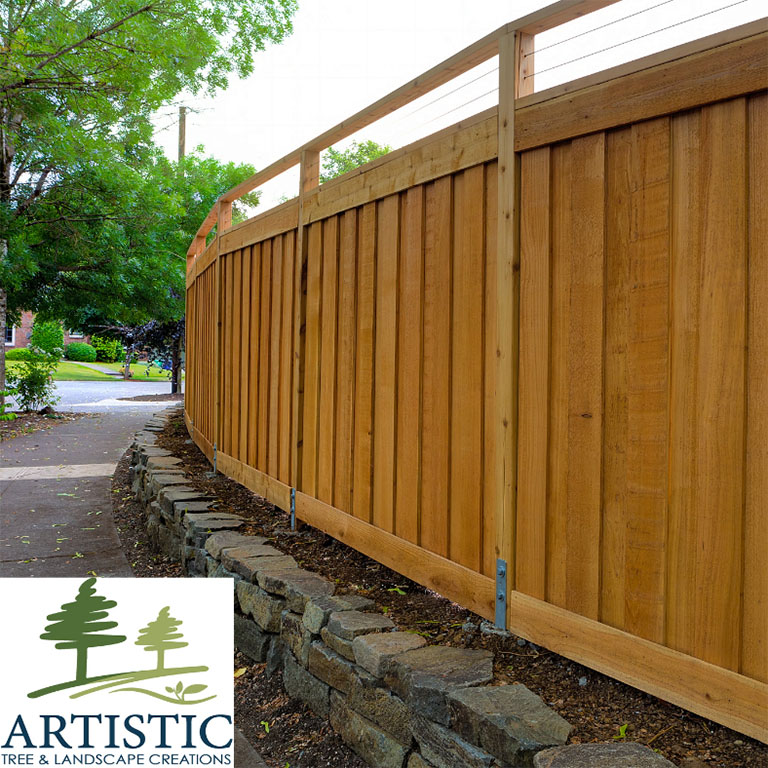All Categories
Featured

Amongst the most preferred choices, wood, plastic, and aluminum each offer special benefits and disadvantages. Here's a malfunction of the pros and cons of these 3 typical fence products.
Timber Fence. Wood fencing has actually been a classic choice for home owners as a result of its natural appeal and flexibility.
Pros:. Visual Allure: Timber supplies a cozy and traditional look that complements a range of architectural styles. Adjustable: It can be painted, tarnished, or reduce right into unique layouts to suit personal preferences. Cost-Effective: At first, timber fencing can be an inexpensive alternative contrasted to other materials. Eco-Friendly: Timber is a renewable source and can be sustainably sourced. Cons:. High Maintenance: Wood requires regular sealing, staining, or paint to stop rot, insect damage, and weathering. Resilience Issues: Without correct care, wood can warp, split, or degeneration with time, specifically in locations with high humidity. Much shorter Life expectancy: A timber fencing usually lasts 10-20 years, relying on the kind of timber and degree of maintenance. Wood is perfect for those that value a traditional appearance and agree to dedicate to its maintenance.
Vinyl Fencing. Vinyl is a modern, low-maintenance fencing alternative that has expanded in popularity recently.

Pros:. Reduced Upkeep: Plastic does not require paint, staining, or securing and can be quickly cleansed with soap and water. Weather condition Resistant: It withstands extreme weather without deteriorating, rusting, or bending. Durable: Vinyl fences can last 20-30 years with very little upkeep. Range of Styles: Readily available in lots of shades, designs, and structures, some vinyl choices imitate the look of wood. Cons:. Greater Upfront Expense: Plastic fence can be extra pricey initially contrasted to wood. Brittleness in Winter: In extreme cool, plastic might fracture or end up being brittle. Minimal Repair works: Private panels can be hard to replace, requiring cautious matching to the existing fencing. Plastic is finest fit for home owners looking for a long lasting, low-maintenance remedy with contemporary appearances.
Aluminum Secure Fencing. Light weight aluminum fencing is a durable and lightweight option, typically selected for its modern-day look and versatility.
Pros:. Rust-Resistant: Aluminum doesn't corrosion, making it an excellent selection for wet or humid environments. Reduced Upkeep: Calls for marginal maintenance and is simple to tidy. Resilient: While light-weight, aluminum is strong sufficient to endure lots of environmental conditions. Lengthy Life expectancy: Can last several decades without considerable wear or degeneration. Variety of Styles: Uses a classy and streamlined appearance, frequently utilized for decorative or decorative functions. Disadvantages:. Higher Cost: The initial financial investment for light weight aluminum secure fencing is more than timber or plastic. Less Privacy: Aluminum fences are frequently developed with open pickets, making them less effective for personal privacy. Vulnerable to Damages: Although sturdy, light weight aluminum can be dented by strong impacts. Light weight aluminum is suitable for those seeking a stylish, resilient choice that requires marginal care.
Making the Right Option. Each fence material-- timber, plastic, and aluminum-- provides distinct benefits and disadvantages. Your choice should depend upon your specific priorities, such as budget, maintenance choices, environment, and aesthetic objectives:
Pick wood if you love a standard look and do not mind normal upkeep. Select vinyl if you desire a low-maintenance, weather-resistant fencing with contemporary charm. Opt for light weight aluminum if you prioritize sturdiness, corrosion resistance, and a sleek design. By considering these pros and disadvantages, you can pick a fencing product that improves your residential or commercial property while meeting your functional demands.
Latest Posts
The Convenience and Efficiency of Billing Your EV
Published Apr 19, 25
1 min read
Decorative Iron Fence: Style and Stamina
Published Apr 19, 25
2 min read
NAPA AutoCare: Professional Repairs Backed by the NAPA Network
Published Apr 19, 25
2 min read